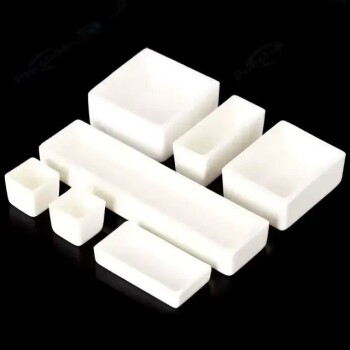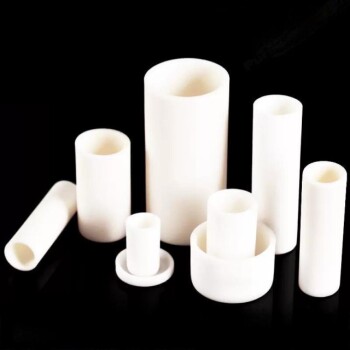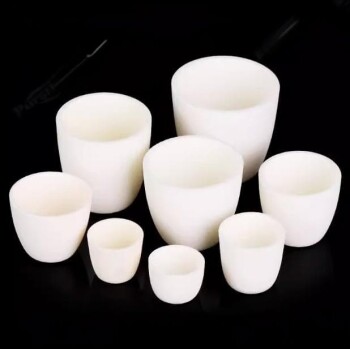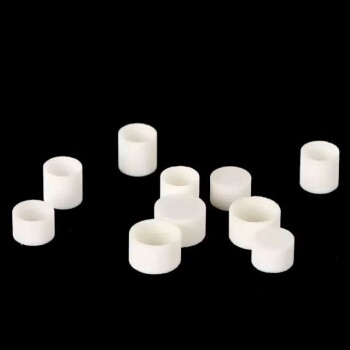In short, alumina is a cornerstone material for furnaces because of its exceptional ability to withstand extreme heat, resist chemical attack, and provide long-term structural integrity. It serves as a durable barrier, protecting the furnace structure and ensuring the purity of the process within it.
The core reason for using alumina is to achieve operational reliability and process consistency at high temperatures. Its unique combination of thermal, chemical, and structural stability directly translates to longer furnace life, reduced maintenance, and more predictable results.
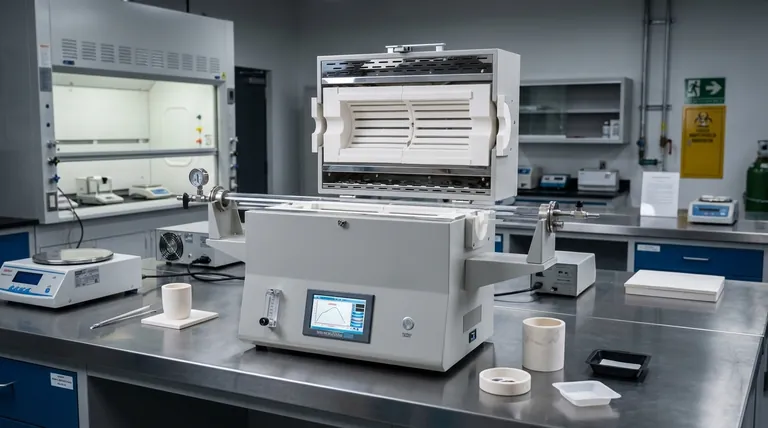
The Core Properties of Alumina for Furnace Applications
To understand why alumina is so widely used, we must look at its fundamental material properties. These characteristics make it an ideal choice for the harsh environment inside a furnace.
Exceptional Refractoriness
Refractoriness is the ability of a material to withstand high temperatures without deforming or melting.
High-purity alumina can maintain its strength at temperatures up to 1800°C (3272°F). This high heat tolerance is why it is specified for the most demanding applications, including blast furnaces, ceramic kilns, and glass tanks.
Chemical Inertness
Alumina is chemically stable and does not readily react with other materials, even at high temperatures.
This property is critical for preventing contamination. For example, it is used as casings for electric heating elements because it does not chemically interact with them. In carburizing furnaces, special high-alumina bricks are used to resist reactions with the carbon monoxide atmosphere.
Durability and Longevity
Furnace components made from alumina are significantly more durable and longer-lasting than many alternatives.
Alumina tubes, for instance, offer a much longer service life compared to quartz tubes in similar high-temperature applications. Using a robust material like alumina reduces the frequency of maintenance and the risk of costly failures and downtime.
Where Alumina is Used in Furnaces
Alumina's properties make it suitable for several critical roles within a furnace, from the inner lining to specialized components.
As Inner Linings and Brickwork
The most common application is in the form of high-alumina bricks. These bricks form the inner "hot face" lining of the furnace.
This lining acts as the primary shield, containing the heat and protecting the outer furnace shell from thermal and chemical damage.
For Crucibles and Containment
Because of its chemical inertness, alumina is an excellent material for crucibles—containers used to hold materials for melting or high-temperature processing.
It ensures that the material being heated does not become contaminated by the container itself.
For Protective Tubes and Components
Alumina is often formed into tubes and other shapes to insulate and protect sensitive components like thermocouples or heating elements.
This isolates the components from the harsh furnace atmosphere, ensuring accurate measurements and preventing premature failure.
Understanding the Trade-offs
While alumina is a superior refractory material, it is essential to understand its limitations to make an informed decision.
Cost vs. Performance
Higher-purity alumina generally offers better performance, but it comes at a higher cost compared to other refractories like silica brick. The choice often depends on the specific temperature and chemical requirements of the application.
Transparency and Visibility
A key operational difference can be seen when comparing alumina tubes to quartz tubes. While far more durable at high temperatures, alumina is opaque. If direct visual monitoring of a process is required, a transparent material like quartz may be necessary, despite its lower temperature limit.
Thermal Shock Resistance
Like many ceramics, alumina can be susceptible to thermal shock—cracking caused by rapid temperature changes. Proper heating and cooling procedures are essential to maximize the life of alumina components and prevent premature failure.
Making the Right Choice for Your Application
Selecting the right material is about matching its properties to your primary operational goal.
- If your primary focus is maximum heat resistance: Alumina is one of the best choices for applications consistently operating above 1500°C.
- If your primary focus is chemical purity: Alumina's inertness makes it ideal for processes where contamination must be avoided, such as in semiconductor manufacturing or specialized metal processing.
- If your primary focus is long-term reliability and reduced downtime: The superior durability of alumina components often justifies the initial investment by minimizing maintenance cycles and operational disruptions.
Ultimately, alumina provides a stable and predictable foundation for countless high-temperature industrial processes.
Summary Table:
| Property | Benefit for Furnaces |
|---|---|
| Refractoriness | Withstands temperatures up to 1800°C (3272°F) |
| Chemical Inertness | Resists reactions, ensuring process purity |
| Durability | Provides long service life, reducing maintenance |
| Applications | Linings, crucibles, protective tubes, and more |
Upgrade your lab's furnace performance with KINTEK's high-purity alumina solutions.
Whether you're working in materials research, metal processing, or semiconductor manufacturing, our alumina components deliver the reliability and purity your processes demand.
✅ Maximize heat resistance for temperatures up to 1800°C
✅ Ensure chemical inertness to protect sensitive materials
✅ Extend equipment life and reduce downtime
Let our experts help you select the right alumina products for your specific furnace needs. Contact KINTEK today to discuss how we can enhance your lab's efficiency and results!
Visual Guide
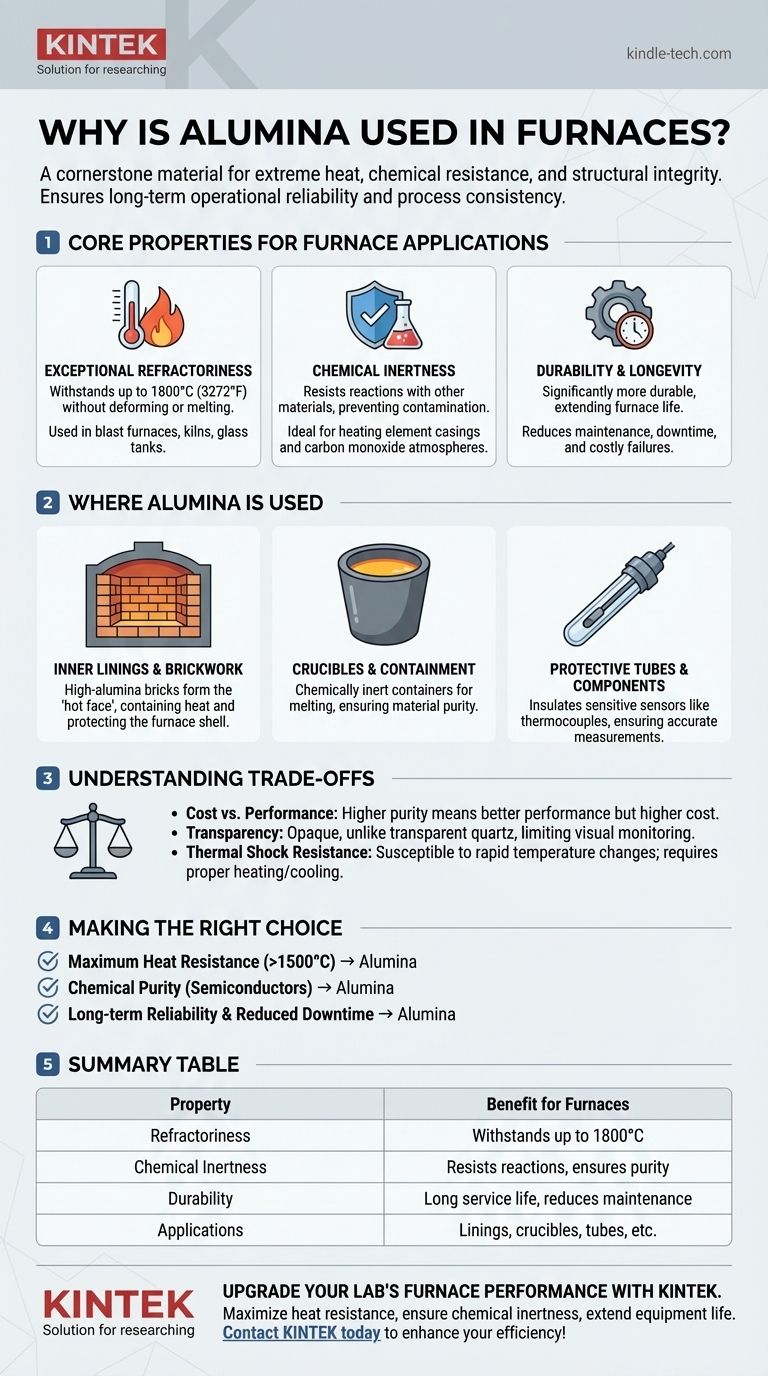
Related Products
- 1400℃ Laboratory Quartz Tube Furnace with Alumina Tube Tubular Furnace
- 1700℃ Laboratory Quartz Tube Furnace with Alumina Tube Tubular Furnace
- Laboratory Muffle Oven Furnace Bottom Lifting Muffle Furnace
- Engineering Advanced Fine Alumina Al2O3 Ceramic Crucible for Laboratory Muffle Furnace
- Engineering Advanced Fine Ceramics Alumina Al2O3 Crucible With Lid Cylindrical Laboratory Crucible
People Also Ask
- What material are furnace tubes? Choosing the Right Material for High-Temperature Success
- What precautions should be taken when using a tube furnace? Ensure Safe, Effective High-Temperature Processing
- How to clean a tube furnace? A Step-by-Step Guide for Safe and Effective Maintenance
- What are the benefits of a tube furnace? Achieve Superior Temperature & Atmosphere Control
- What is a tubular furnace used for? Precision Heating for Material Synthesis & Analysis



